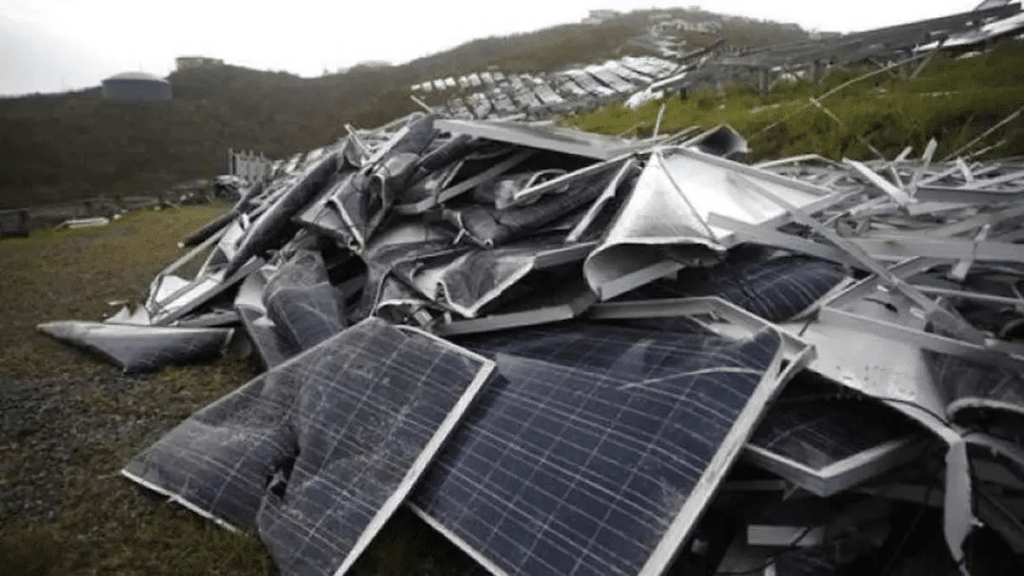Investing in solar power requires a large upfront commitment, but it’s one that usually pays off for homeowners in the long run. Of course, that means you need the equipment you’ve just purchased to stand the test of time, and continue producing power for your home for many years to come. But like any electrical or mechanical system, the parts of your solar power system can be damaged if they’re not properly maintained and protected. What are the most common causes of damage to solar panels, inverters, and battery banks? Keep reading to find out—and to learn how you can protect your equipment.
Common Causes of Damage to Solar Panels
Solar panels are probably the most likely piece of equipment to take damage, simply because they’re exposed to the elements the most. Here are the most common causes of damage to this piece of solar equipment:
- Weather: Hail, wind, snow, and lightning can be some of the most destructive elements of nature—and your panels have to endure them all. While solar panels are tested to withstand hail up to an inch in diameter, striking at speeds as high as 50 miles per hour, anything larger or faster can crack the protective glass over the solar cells. Strong winds can also cause flexing, pull poorly mounted panels off a roof, or break off nearby tree branches, causing them to fall onto your panels. While lightning strikes are rare, they can happen, leading to power surges that damage the cells and junction boxes.
- Debris and Dirt: Dirt, dust, leaves, bird droppings, and even simple pollution can cause a film to form on your solar panels, reducing their efficiency and even leading to hot spots, which can damage the cells over time and lead to earlier degradation.
- Extreme Temperatures: Panels are constantly exposed to temperature changes, especially in climates with hot days and cold nights. These fluctuations can cause materials to expand and contract, leading to microcracks in the cells. Over time, these little cracks can reduce panel production or even cause them to fail completely.
So, what can you do about these things? Obviously, you can’t control the weather, but you can ensure you’re getting weather-rated mounting systems and that your panels are installed by a professional. Surge protectors and proper ground also help reduce the risks associated with lightning strikes. For dirt and debris, routine cleanings can make a big difference in panel longevity. And when it comes to thermal stress, using high-quality panels can often prevent microcracks entirely.
Common Causes of Damage to Solar Batteries
If you have a hybrid or off-grid system, your solar batteries are essential for storing energy for later use. They’re also one of the most sensitive components of a solar power system, and can be damaged in a number of ways:
- Overcharging and Deep Discharging: Improper charging cycles can have a huge impact on battery lifespan. Overcharging leads to overheating, while deep discharging (draining the battery below recommended levels) can lead to permanent capacity loss.
- Excessive Heat or Cold: Like panels, batteries are negatively impacted by temperature extremes. Heat accelerates internal chemical reactions, leading to faster degradation, while extreme cold can reduce battery efficiency and even cause freezing in some battery types.
- Poor Ventilation: This is especially problematic for lead-acid batteries, as it can lead to hydrogen gas buildup, corroding electrical connections and increasing the risk of a fire.
Luckily, preventing these issues is quite simple: Install your batteries in a proper location with good ventilation and temperature controls, and ensure that you do not overcharge or deeply discharge your batteries; a battery management system and charge controller can help with this latter issue.
Common Causes of Damage to Solar Inverters
Inverters are the brains of a solar power system, changing DC to AC power and managing the flow of electricity to your home. They tend to be more protected than panels, but they’re still typically installed outdoors and, therefore, can be vulnerable to certain types of damage:
- Electrical Surges: One of the most common causes of inverter failure is voltage surges. These surges can come from grid instability, lightning, or internal system issues, but regardless of the source, they can fry internal electronics and render the inverter useless.
- Overheating: Inverters generate heat when they’re operating, and if they don’t have proper cooling and airflow, they can overheat. This may lead to thermal shutdowns or, even worse, internal component failures.
- Moisture and Corrosion: Even when installed indoors or in weatherproof enclosures, inverters can often be damaged by moisture sneaking into its internal components. Humid environments are especially prone to those, accelerating the corrosion of circuit boards and terminals, among other parts.
Be sure to install high-quality surge protectors to insulate your inverter from electrical surges. Install it in a shaded, ventilated location and regularly clean fans or vents to ensure proper airflow and avoid overheating. Make sure your inverter has an appropriately moisture-proof enclosure (especially if you’re in a humid environment), and consider installing a dehumidifier nearby if installing indoors.
If you do experience damage to an inverter, battery, or Mission Solar panel, speak to your installer or manufacturer to see if repairs or replacement could be covered in your warranty.
